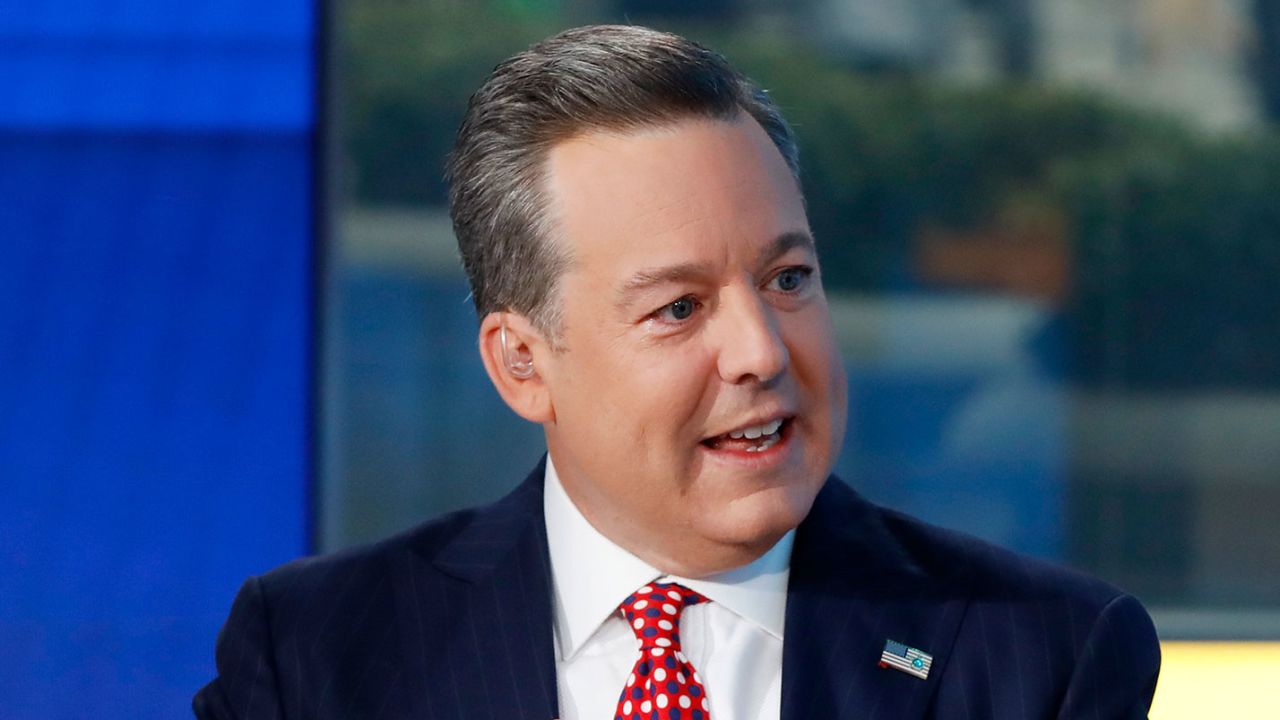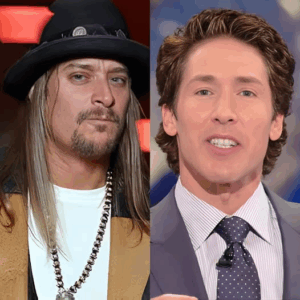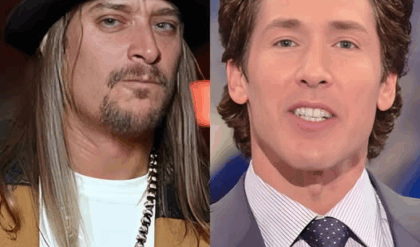Here’s a straight-shooting look at what’s really going on and why it matters—no melodrama, no corporate gloss. Fox News, the cable titan that’s been a fixture in American living rooms for decades, has reportedly circulated a list of on-air anchors who are on the chopping block. Not whispered in hushed hallways or buried in an internal memo. Public. Out in the open. The kind of move that makes industry veterans pause and say: Huh. So we’re doing this now.
If you’ve been around the business long enough, you develop a nose for the difference between a routine reshuffle and a structural tremor. This smells like the latter. Fox, for all its brand consistency and ratings muscle, has hit a moment that challenges its identity. Not just who sits in the chair at 8 p.m., but who the network is courting, how it defines “talent,” and whether the old rhythms—the familiar faces, the nightly cadence—still fit a media world that’s splintered into shards of niche audiences and algorithmic rabbit holes.
Let’s get the bones of it on the table: a list of anchors, some with years in the building and equity with viewers, reportedly slated for termination. The rationale is dressed up the usual way—transparency amid corporate changes, strategic realignment, cost controls, demographic shifts—but the public nature of the disclosure changed the temperature in the room. In this business, personnel moves are usually handled with polite fiction: “moving on to new opportunities.” The specificity here—names, consequences, a visible line in the sand—sparked backlash from fans, skepticism from media analysts, and understandable frustration from the people whose livelihoods are now collateral in a strategy pivot.

Here’s the part that doesn’t get said enough: anchors aren’t just employees. In cable news, they’re brand totems. Advertisers buy audience profiles, yes, but they also buy familiarity. They buy trust—however that’s defined within a given ecosystem. When you decapitate that relationship, even partially, you don’t just swap a person; you risk the equilibrium of a nightly ritual. You test the contract with viewers who, like it or not, turn to TV news for regularity in a jittery world.
So why do it? The simple answer is that television is expensive and fickle. The complicated answer is that Fox is trying to thread the needle between holding its core—those loyal, routine viewers—and nudging its programming to meet a changing marketplace. Competition isn’t what it was ten years ago. It’s not just rival cable networks anymore; it’s podcasts, YouTube personalities, streaming news channels, creators with cameras and sharp elbows. Ratings may still crown the top dog in prime time, but pressure comes from every angle. Talent costs are high. Audience habits are volatile. The middle is thinning out.
Industry veterans will tell you: when a network starts talking about “fresh talent” and “innovative programming,” it’s both a promise and a gamble. New voices can invigorate a lineup. They can also unsettle it. Innovation is a bright word that covers a range of sins—shorter segments, faster pacing, more opinion-driven framing, more cross-platform anchors who perform on TV and TikTok with equal fluency. The risk is losing the steady hand that makes a network feel like a home base, not a content mill.
Viewers have already weighed in, many with a kind of nostalgic anxiety. There’s a particular kind of disappointment that comes when an anchor you’ve watched for years is suddenly gone. It feels impersonal in a personal medium. Meanwhile, critics—some of whom have had the network in their crosshairs for ages—argue that a purge like this signals instability, or that it’s a defensive move dressed up as strategy. The truth probably lives somewhere down the middle: a network trying to manage costs, expand reach, and sharpen its voice, all while keeping an iron grip on ratings.
Behind the scenes, advertisers and partners are quietly doing their math. Anchor changes affect audience flow, and audience flow affects price. If the new lineup holds its numbers, fine. If it dips, they’ll notice. If it skews younger, great—if those viewers stick. Loyalty is the currency in cable news, but loyalty and habit don’t guarantee growth. So the sales teams will talk about momentum and platform integration and cross-channel engagement, and they’ll hope the nightly shows deliver a clean narrative to back it up.

For the anchors named—let’s say it plainly—this is a life moment, not just a career blip. Some will land at competitor networks; the market for recognizable faces never fully dries up. Others will go independent, and honestly, the runway has never been longer. A well-built YouTube channel, a podcast with a pointed editorial line, a Substack with disciplined reporting—these are no longer fallbacks. They can be the main road. Audiences have learned to follow voices across platforms, and the smart anchors know how to bring their audience with them. If you’re savvy, you treat a network exit as a brand liberation, not a brand injury.
There’s a bigger industry pattern here worth marking. The old scaffolding—network-first, anchor-second—is getting reversed. Talent now carries portable equity, and networks know it. That creates tension. Networks need stability and predictability; talent needs leverage and autonomy. Layoffs, restructurings, “realignments”—they’re symptoms of an industry reacting more than planning. The media business has a bad habit of mistaking speed for strategy. Sometimes a rapid rebrand works; often it just looks like motion.
And there’s another layer: transparency. Did Fox’s public posture here show admirable candor, or did it escalate the spectacle? Depends on your appetite for corporate honesty. In theory, transparency builds trust. In practice, lists of names create a scoreboard mentality. The audience reads it like a contest. The press covers it like a storm. Internal morale takes a hit because uncertainty is louder when it’s public. If the goal was clarity, the method may have produced chaos.
Now, I’ll say something that might frustrate the zealots on both sides: networks change. They evolve, sometimes gracefully, sometimes clumsily. The familiar faces you watch every night are not immune to market math or editorial recalibration. And if Fox manages this well—staggered transitions, thoughtful auditions, clear editorial framing—it can come out tighter, sharper, maybe even more relevant to the audience it wants next. If it rushes or panders, the audience will smell it. Viewers are far more sophisticated than ratings decks let on. They can tell the difference between authentic recalibration and frantic churn.

The programming promise—fresh talent, innovative formats—sounds decent on paper. Execution is the real test. You can hire a younger anchor with blazing social metrics and still miss the tone your audience expects at 9 p.m. You can add “innovative segments” that feel like borrowed ideas from streaming news shows that don’t have to keep pace with live breaking coverage. You can chase the dopamine of quick takes and lose the spine of a show. Or you can do the hard work: define the editorial center, build around it, let new voices earn trust over time, and accept that ratings fluctuate in service of a healthier long-term identity.
For viewers, the advice is simple: don’t confuse churn with progress. Watch the shows. Listen for the editorial posture—what the program is trying to do, not just how loud it says it. For advertisers, hedge your bets: follow the audience data, but keep your eye on consistency. For the anchors who are out—or who think they might be next—own your voice. A network confers scale, not soul. The latter is portable.
There’s a small irony here worth noting. Fox built much of its modern dominance on personality-driven programming. Personalities are sticky. They also become expensive, powerful, and sometimes bigger than the shows they host. To reclaim control of the architecture, a network burns a little of its own mythology. It reminds viewers that the logo is the constant. Whether that reminder lands softly or harshly depends on what comes next.

So yes, the uproar is real. The uncertainty is real. The stakes, in terms of brand and business, are not trivial. But this isn’t the end of an era so much as an inflection point. Cable news has been living on borrowed time from an audience model designed for a world before streaming, before micro-influencers, before algorithmic news feeds. If Fox wants to write the next chapter, it will need to blend the old craft—smart booking, disciplined production, anchors who know how to hold a room—with the new reality: audiences expect personality and portability, not just a slate.
If you’re watching for the long-term play, look at the lineup six months from now, not six days. Who’s promoted? Who’s quietly anchored on weekends, testing format changes? Which shows invest in original reporting versus panel chatter? Where the network allocates its prime-time minutes will tell you which audience it’s betting on. And that—more than lists, more than memos—is the story to follow.
News
The auditorium glitched into silence the moment Joel Osteen leaned toward the mic and delivered a line no pastor is supposed to say in public. Even the stage lights seemed to hesitate as his voice echoed out: “God will NEVER forgive you.” People froze mid-applause. Kid Rock’s head snapped up. And in that weird, suspended moment, the crowd realized something had just detonated off-script.
The crowd expected an inspiring evening of testimony, music, and conversation. What they got instead was one of the most explosive on-stage confrontations ever witnessed inside a church auditorium. It happened fast—36 seconds, to be exact.But those 36 seconds would…
The room stalled mid-breath the moment Mike Johnson snapped open a black folder that wasn’t on any official docket. Cameras zoomed. Staffers froze. The label on the cover — CLINTON: THE SERVER SAGA — hit like a siren. Johnson leaned toward the mic, voice sharpened enough to scratch glass, and read a line that made every timeline jolt: “Her email is criminal.”
Here’s the thing about made-for-TV government: it knows exactly when to hold a beat. Tuesday’s oversight hearing had the rhythm down cold—routine questioning, polite skirmishes, staffers passing notes like we’re all pretending this is not a stage. And then Mike…
🔥 “THE FLOOR SHOOK BEFORE ANYONE COULD SPEAK.” — Investigator Dane Bonaro didn’t walk into the chamber — he tore through it, slamming a blood-red binder onto the desk with a force that made the microphones hiss. The label on the cover froze the room mid-breath: “1.4 MILLION SHADOW BALLOTS.” He locked eyes with the council and snarled, “You want the truth? Start with this.” For one suspended second, every camera operator lifted their lens like they’d just smelled a political explosion.
Here’s a scene you’ve watched a hundred times if you’ve spent enough hours in hearing rooms and greenrooms: a witness with a flair for performance, a committee hungry for a moment, and a gallery of reporters quietly betting which line…
🔥 “THE SMILE FLICKERED—AND THE ENTIRE STUDIO FELT IT.” — Laura Jarrett walked onto the Saturday TODAY set with the kind of calm, polished glow producers dream of. Cameras glided, lights warmed, and the energy felt like a coronation. But right as she settled between Peter Alexander and Joe Fryer, something shifted — a tiny hesitation in her smile, the kind that makes everyone watching sit up a little straighter. And then it came: a voice from outside the studio, sharp enough to snap the broadcast in half. For a full second, no one moved.
Here’s the thing about TV milestones: they’re designed for easy applause. A new co-anchor takes the desk, the chyron beams, the studio lights do their soft-shoe, and everyone is on their best behavior. It’s a ritual as old as morning-show…
🔥 “THE ROOM STOPPED LIKE SOMEONE CUT THE OXYGEN.” — What’s racing across timelines right now isn’t framed as a speech, or an interview, or even a moment. It’s being told like a rupture — the instant Erika Kirk, normally armored in composure, let a single tear fall while standing beside Elon Musk. Witnesses in these viral retellings swear the tear didn’t look emotional… it looked inevitable, like something finally broke through her defenses. And when Musk turned toward her, the entire audience leaned in as if they already knew the world was about to shift.
It was billed as a calm forum on human rights—an hour for big ideas like freedom, transparency, and the obligations that come with having a public voice. The stage was washed in soft gold, the kind of lighting that flatters…
🔥 “THE ROOM WENT DEAD IN UNDER A SECOND.” — What unfolded inside the Senate chamber didn’t look like a hearing anymore — it looked like a trap snapping shut. Adam Schiff sat back with that confident half-smile, clutching a 2021 DOJ memo like it was the final move in a game he thought he’d already won. Staffers say he timed his line perfectly — “Your rhetoric ignores the facts, Senator. Time to face reality.” But instead of rattling Kennedy, something in the senator’s expression made even reporters lean forward, sensing the shift before anyone spoke again.
It didn’t look like much at first—another oversight hearing, another afternoon in a Senate chamber where the oxygen gets thinned out by procedure. Then Adam Schiff leaned into a microphone with a lawyer’s confidence, and John Neely Kennedy pulled out…
End of content
No more pages to load











